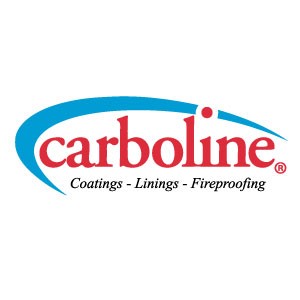
Just like checking your windshield for fog or running your hands along a pipe to assess sweat isn’t an accurate method for obtaining dew-point or relative humidity readings, simply gauging a tank lining by eye isn’t an effective way to conduct a holiday detection test.
In order to ensure compliance with ASTM, ISO and other specifications, there are specific coating inspection tools that are necessary to have on hand at every stage of the coating process. Ideal for on-site quality control assessments of industrial coatings, these tools can help measure everything from surface profile and dry film coating thickness, to atmospheric temperature readings.
Below are the seven most common tools that every coating inspector or paint contractor should have in their toolbox in order to maximize coating performance:
1. Digital Psychrometer
A digital psychrometer is a hand-held, field-calibratable tool used to accurately measure atmospheric temperature, relative humidity, dew point and wet bulb. Though the digital version is most commonly seen today, a sling psychrometer—known as a “whirly bird”—can also be used.
2. Surface or Digital Thermometer
In order to calculate dew point, the surface of a substrate must first be determined. Magnetic surface thermometers are thermodynamically designed to measure surface temperature. The greater the thermal mass of the source, the more accurate the readings will be. An infrared digital thermometer offers a non-contact option to obtain temperature readings from a targeted surface, typically within a 3- to 35-foot range.
3. Micrometer Dial with Testex Replica Tape & Surface Profile Gauge
Given that most coatings require some kind of profile for adherence, these tools are a must when surface prepping steel, alloys or other non-ferrous metals. Used in conjunction with a Testex replica tape, a micrometer dial measures the surface profile of abrasive blast-cleaned surfaces. The replica tape is rubbed onto the surface, forming a reverse replica of the peak-valley pattern in the steel. A surface profile gauge can be used to measure peak-to-valley surface profile on either flat or curved surfaces.
4. Wet & Dry Film Coating Thickness Gauges
When measuring coating thickness, there are two tools that can be used—a wet film thickness (WFT) gauge and a dry film thickness (DFT) gauge. Used to test the thickness of a liquid-based wet coating, a WFT gauge should be used as the coating is being applied to ensure proper measurement of the wet film prior to significant solvent evaporation. For the most accurate readings, a DFT gauge should only be used once the film has achieved thumbprint hardness.
5. Low- & High-Voltage Holiday Detectors
Holiday detectors are a non-destructive tool used to detect pinholes, holidays or thin points in coatings applied for corrosion protection over metal or concrete surfaces. They are ideal for tank linings or coatings intended for immersion service where the film must be monolithic and pinhole free. A low-voltage holiday detector tests up to 20 mils, whereas a high-voltage holiday detector is ideal for coating systems over 20 mils, at 100 volts per mil.
6. Telescopic Inspection Mirror
A telescopic inspection mirror is ideal for the in-depth examination of difficult-to-access areas—such as inside pipes, behind corners or underneath inspection tanks—for holidays, pinholes or other imperfections.
7. Basic Camera
Most inspection documentation requires photos to be taken before, during and after completion of the coatings project. A basic camera, such as a smartphone, is sufficient for taking quality inspection photos.
Whether you’re a coating inspector, a contracting company, a foreman of a paint crew or someone just looking to break into the industrial coatings industry, having these inspection tools in your toolbox during each stage of the coatings process will help to ensure proper data sheet compliance and maximize the performance of your industrial coatings over the long run.

